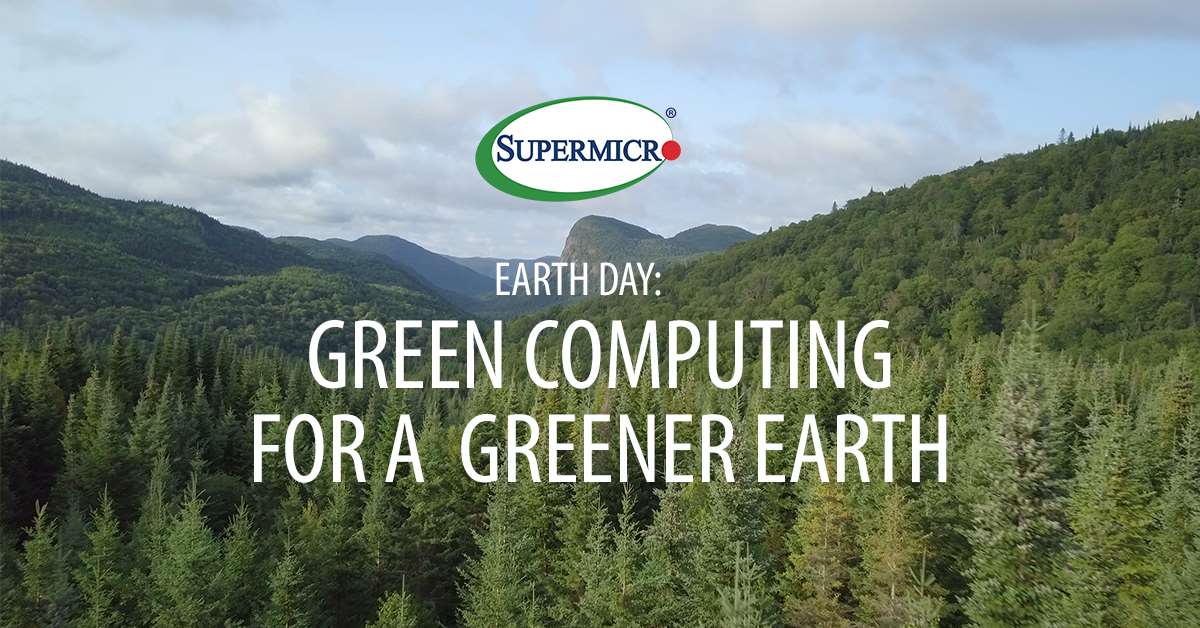Supermicro - Grünes Computing für eine grünere Erde
Supermicro befasst sich mit den Problemen des Stromverbrauchs in Rechenzentren im System- und Rackmaßstab. Während ein allgemeiner Server immer noch die Hauptkomponenten CPUs, GPUs (für KI und HPC), Speicher und Netzwerk hat, wird der durchschnittliche Stromverbrauch pro Server durch den Einsatz verschiedener Technologien gesenkt. Die erste besteht darin, bestimmte Komponenten auf verschiedene Server aufzuteilen. So können größere Netzteile verwendet werden, die bei höherer Auslastung im Umwandlungsschritt weniger Strom verlieren. Außerdem können durch die gemeinsame Nutzung von Lüftern größere und effizientere Lüfter verwendet werden, was den Stromverbrauch auf Serverebene ebenfalls reduziert. Durch die gemeinsame Nutzung von Komponenten und die Disaggregation reduziert Supermicro sowohl die TCO als auch die TCE (Total Cost to Environment) durch die Minimierung des Elektroschrotts bei jedem Upgrade-Zyklus.
Da CPUs und GPUs mit jeder neuen Generation mehr Strom verbrauchen, sind neuartige und einfache Techniken erforderlich, um den Kühlungsbedarf von leistungsstarken Servern und Rechenzentren zu reduzieren. Die Flüssigkeitskühlung wird immer beliebter, da die Komponenten mehr Wärme erzeugen. Bei der Flüssigkeitskühlung auf Serverebene wird die kalte Flüssigkeit über die CPUs und GPUs sowie andere Hochleistungskomponenten gepumpt, wodurch die Wärme von den elektronischen Geräten abgeleitet wird. Flüssigkeiten sind bei der Wärmeabfuhr 25-mal effizienter als Luft. Daher reduziert die Flüssigkeitskühlung auf Systemebene die Lüftergeschwindigkeit (die für andere wärmeerzeugende Komponenten weiterhin erforderlich ist), da weniger Luft über die Elektronik gezogen werden muss. Die bedeutendsten Einsparungen bei der Senkung des PUE-Wertes in einem Rechenzentrum ergeben sich außerdem aus der geringeren Anzahl von Klimaanlagen, die verwendet werden müssen.
Zusätzliche Flüssigkeits-Kühltechniken, wie z.B. Rear Door Heat Exchangers und Immersion Cooling, können implementiert werden. In beiden Fällen, wie auch bei Direct To Chip, wird die Kühltechnologie näher an die CPU und GPU gebracht, was den Bedarf an Computer Room Air Conditioning (CRAC) weiter reduziert. Viele Produktfamilien von Supermicro wurden in Hochtemperaturumgebungen entwickelt und ausgiebig getestet, so dass die Kunden sich sicher fühlen, ihre Rechenzentren bei heißeren Temperaturen zu betreiben und den Energieverbrauch der CRAC zu reduzieren.
Green Computing ist in das Design von Servern, KI und Rack-Scale-Lösungen von Supermicro eingebettet. Wenn mehr Unternehmen Green-Computing-Lösungen einsetzen, könnten sie insgesamt 10 Milliarden US-Dollar an Stromkosten pro Jahr einsparen. Darüber hinaus entspricht die Reduzierung des Stromverbrauchs durch Green-Computing-Lösungen wie die von Supermicroder Abschaffung von 30 Kraftwerken mit fossilen Brennstoffen und der Pflanzung von etwa 8 Milliarden Bäumen zum Ausgleich der CO2-Emissionen.
Lassen Sie uns zusammenarbeiten und unsere Mutter Erde grüner und glücklicher machen.
